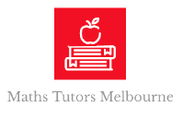|
Math is a tricky subject for many students. The way it is generally taught doesn’t help, with so much emphasis put on processes and skill development. This leaves students with no in depth understanding of what they have leant, or the contexts within which to apply it. Texts books are set up to teach students a skill, then allowing them to practice it. Once the skill has been mastered, the next exercise will teach another skill. Yes, there are application and problem-solving questions within the exercises, but students know that they need to apply the skill they have just learnt, as this is what the exercise was all about. As far as context and understanding go, many students are in the dark. As a teacher and tutor of many years, I so often hear students say; “It’s easy until I do the test, and then I just don’t get it anymore.” If you think about the standard process of learning in Math through textbooks, it is obvious why this is all too common. Students learn skills which they know how to apply individually at the time of learning. Once the test arrives, all the questions are presented at once, requiring the use of a variety of skills, knowledge and understanding. As students have not had the chance to develop any contextual understanding of what they are learning, they have no idea which skills and knowledge to apply to each question. Skills development is a fundamental part of learning Math, but it is also essential to reach a higher-level of understanding. This is a revision activity I use to help students contextualise their knowledge and develop a more in depth understanding of the unit as a whole: Learning Intention: To consolidate understanding of a unit of work Success criteria I recognise links between ideas I can explain in detail how different ideas within the unit are related Optional extension- I can provide examples which can be linked to the concepts and formulas presented. Preparation: Create cards or cut outs of all the keywords, formulas and concepts learned within a unit. This activity will work with most units of work, though it suits some more than others. The example I provide is triangle geometry and trigonometry. This is learnt as a part of a broader geometry unit in senior school General Mathematics in Victoria, Australia. As you create your cut outs, take into consideration the level of understanding your student(s) have, along with time constraints. For very capable students, you may like to leave out some cut outs and ask them to add in missing formulas or concepts. O the other hand you might like to simplify this activity for less capable students by targeting a narrower range of concepts and giving considerable support. Lesson:
This lesson creates not only a physical map of the unit, but also helps students to categorise and classify information in their own minds. Suddenly, all the skills learned can be grouped and classified. Furthermore, these groups may also be related.
This is just one mind mapping technique which will work as an invaluable revision tool, not only for Math exam revision, but many other subjects as well. Comments are closed.
|
AuthorWrite something about yourself. No need to be fancy, just an overview. Archives
June 2024
Categories |
|
Maths Tutors Melbourne |
